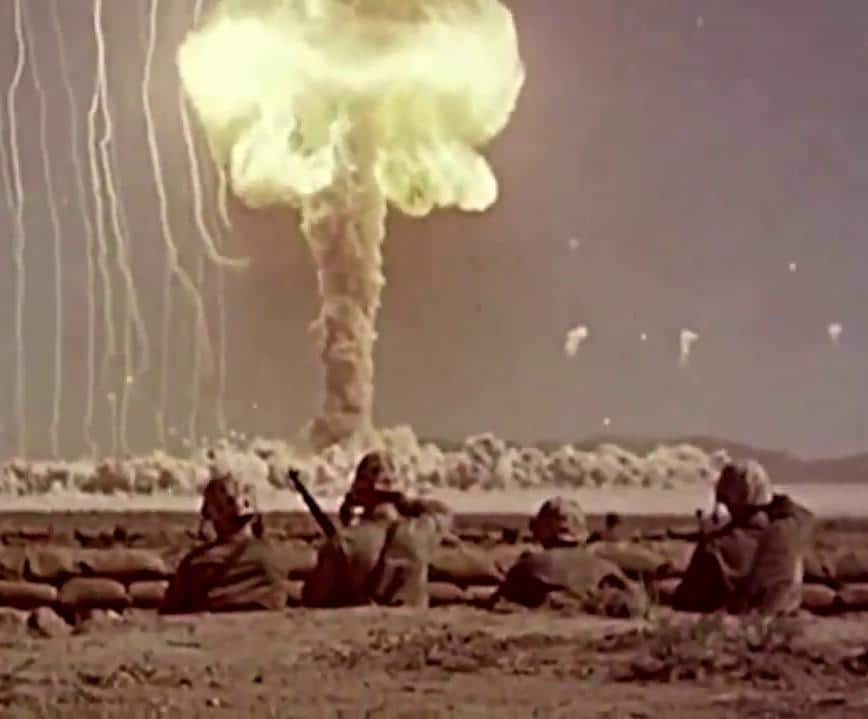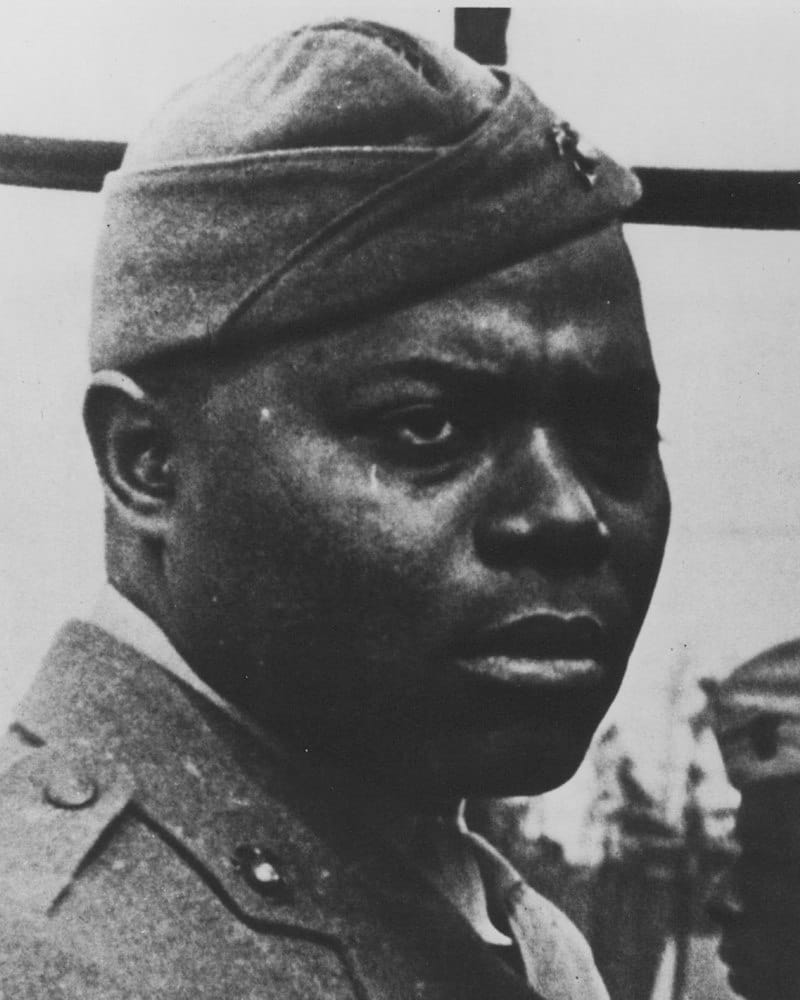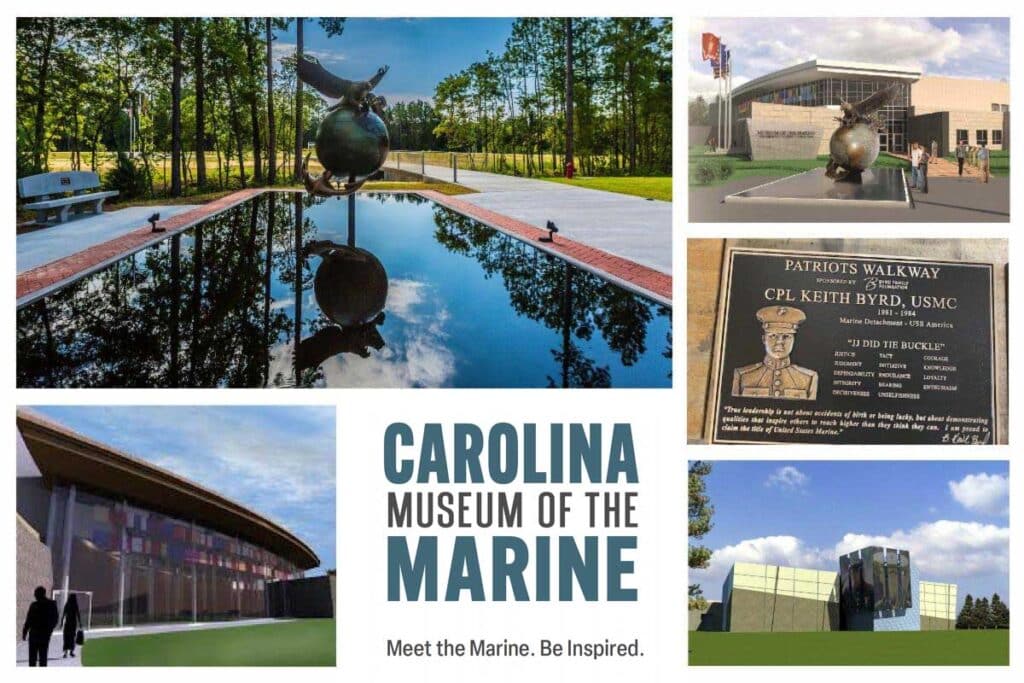Vol 1. No. 5, May 2022 FRONT AND CENTER – The Path of American Independence

FRONT AND CENTER
Vol. 1, No 5, May 2022
Mission
Honoring the legacy of Carolina Marines and Sailors and inspiring future generations.
The Path of American Independence
James Danielson, PhD
On June 7, 1776, Richard Henry Lee of Virginia delivered to the Continental Congress a resolution, known as the Lee Resolution, declaring the colonies of British America to be free and independent states. It reads as follows:
Resolved, That these United Colonies are, and of right ought to be, free and independent States, that they are absolved of all allegiance to the British Crown, and that all political connection between them and the State of Great Britain is, and ought to be, totally dissolved.

That it is expedient forthwith to take the most effectual measures for forming foreign Alliances. That a plan of confederation be prepared and transmitted to the respective Colonies for their consideration and approbation.
Much of this language will be reproduced, almost exactly, in the Declaration of Independence. The Lee Resolution’s call for independence is not without precedent, and neither is its expressed concern that the colonies agree to a political confederation for mutual defense and peaceful commerce. These ideas did not circulate among colonists in the early years of New-World settlement, but developed over time as events pushed them in that direction. So we should consider how this happened. The path leading to American independence, we may argue, began in 1761.
The British fought a years-long war with the French and the American theater of that war is usually called the French and Indian War. The British government was in need of revenues to pay for the war and sought to gain some of it from the American colonies. But Americans were not interested in paying taxes for the king’s war and so hid wealth, engaged widely in smuggling, and generally did whatever they could to avoid the hated taxes. In response, the British government imposed writs of assistance which conferred upon British agents in the colonies the authority to enter any house, shop, warehouse, or ship, without a warrant, and search for and seize anything upon which relevant taxes had not been paid. As one would expect, British agents armed with a government monopoly on theft took full advantage.
James Otis, Jr. was an admired young lawyer who served for a time as the advocate general for the British admiralty court in Massachusetts. When he was called upon to defend the writs of assistance from challenges by merchants in Boston, Otis resigned his office as advocate general and instead represented the Bostonians seeking to overturn the legality of the writs. In February of 1761, Otis appeared before the Massachusetts Superior Court to argue against the writs of assistance. He repeatedly asserted that “Taxation without Representation is tyranny,” and while Americans adopted this phrase as a patriotic motto, they likewise hated taxation with representation. The idea was that by controlling representatives, people can control the appetite of government for ever higher revenues. Otis spoke for five hours making the case against the writs from legal, moral, and political perspectives seeking to make this point:
One of the most essential branches of English liberty is the freedom of one’s house. A man’s house is his castle; and whilst he is quiet, he is as well guarded as a prince in his castle. This writ, if it should be declared legal, would totally annihilate this privilege. Custom-house officers may enter our houses when they please; we are commanded to permit entry. Their menial servants may enter, may break locks, bars, and everything in their way; and whether they break through malice or revenge, no man, no court can inquire. Bare suspicion without oath is sufficient.
Atomic Marines
LtCol Lynn Kimball, USMC (Ret)

Operation Crossroads’ atomic bomb tests at Bikini Atoll in July of 1946 erased any lingering doubts that might have remained following their use at Hiroshima and Nagasaki in August of 1945 about the monumental impact of these weapons in future warfare. The Marine Corps’ major contribution to Allied victory in WW II, the doctrine of waterborne amphibious assault, one of the five most significant tactical innovations of the 20th century, was immediately rendered obsolescent. A key observer at these tests, Marine LtGen Roy S. Geiger, reported succinctly to the Commandant that a complete review of the current concept of amphibious operations would have to be made given that an atomic bomb could easily destroy an expeditionary force as currently configured; some means had to be found to permit a greater initial dispersion while allowing the necessary concentration of the attacking elements in the assault. Forward looking Marine Corps planners found the solution: vertical envelopment by helicopter, the paradigm changing heliborne assault, which was to join the amphibious assault on the list of the five most significant tactical innovations of the 20th century.
As during the 1930s, the Marine Corps had to develop a doctrine employing vehicles and capabilities not yet existing or even on the drawing board, but they prevailed, and the resulting doctrinal publication, promulgated in November 1948 by again, Marine Corps Schools at Quantico, was the world’s first printed textbook detailing the tactics and techniques of helicopter employment. A parsimonious defense establishment, otherwise enthralled with the Air Force and cost cutting, inhibited more expeditious development. But with an expanding Cold War, the detonation of an atomic device by the Soviets in 1949, and the unanticipated onset of a war on the Korean Peninsula in June of 1950, particularly with the massive Communist Chinese intervention in November and the frightening possibility of Soviet involvement, the Marine Corps found itself shortly with an expanded budget and more opportunities to develop its concepts and equipment for the future. This was done under the looming pall of nuclear weapons on the battlefield. The Marine Corps felt they had a vehicle, the helicopter, and a doctrine that would permit success in such a scenario. Such a scenario was, however, unparalleled in military history and replete with unknowns shared across the Armed Forces.
CAROLINA MARINES
Marine Corps Base Camp Lejeune
Marine Corps Air Station Cherry Point
Marine Corps Air Station New River
Marine Corps Camp Geiger | Marine Corps Camp Johnson
Marine Corps Recruit Depot Parris Island
Marine Corps Air Station Beaufort
This issue of FRONT AND CENTER features
Marine Marine Corps Camp Johnson.


Camp Gilbert H. Johnson is a satellite camp of Marine Corps Base Camp Lejeune in Jacksonville, NC. and home to the Marine Corps Combat Service Support Schools (MCCSSS), where various support military occupational specialties such as administration, supply, logistics, finance, corpsman and motor transport maintenance are trained. Camp Johnson is situated on Montford Point, the site of recruit training for the first Black Americans to serve in the Marine Corps, known as “Montford Point Marines”.The purpose of the camp is to conduct formal resident training for officers and enlisted personnel in the occupational fields of logistics, motor transport, personnel administration, supply, and financial management (accounting and disbursing), as well as to conduct instructional management and combat water survival swim training. In addition to training Marines, Camp Johnson also houses the Field Medical Training Battalion, which trains corpsmen and religious program specialists of the Navy. The commanding officer of MCCSSS also serves as the area commander of Camp Johnson and provides administrative support to various tenant commands. WikipediaWhen President Franklin D. Roosevelt signed Executive Order 8802, Blacks were, for the first time, permitted to join the Marine Corps. Between 1942 and 1949, the camp at Montford Point was a recruit depot for black recruits, training 20,000 African Americans during that period. One of the first Black Americans to enlist in the Marine Corps was Gilbert “Hashmark” Johnson, who became a drill instructor Johnson served during World War II and the Korean War, ultimately receiving the rank of sergeant major.
In 1948, by Executive Order 9981, President Harry S. Truman ordered the military to integrate. In 1974, Montford Point was renamed Camp Gilbert H. Johnson. Camp Johnson became the home of the Marine Corps Combat Service Support Schools.[1] In 2007, a documentary entitled The Montford Point Marine Project was released, honoring the black Marines who trained at Montford Point. Wikipedia
Do your know where your foursome is?
Sign up for the 12th Annual Golf Classic, presented by Coastal Enterprises and benefitting Carolina Museum of the Marine and Al Gray Marine Leadership Forum.

Please join us in supporting the mission of
Carolina Museum of the Marine
When you give to our annual campaign, you help to ensure that operations continue during construction and when the doors open!
Stand with us
as we stand up the Museum!

Copyright May, 2022
Carolina Museum of the Marine
2021-2022 Board of Directors
Executive Committee
Mr. Mark Cramer, JD – Acting Chair
Vacant – Vice Chair
CAPT Pat Alford, USN (Ret) – Treasurer
Col Joe Atkins, USAF (Ret) – Secretary
Col John B. Sollis, USMC (Ret) – Immediate Past Chair
General Al Gray, USMC (Ret), 29th Commandant – At-Large Member
LtGen Gary S. McKissock, USMC (Ret) – At-Large Member
Members
Mr. Terry Branton
Mr. Tom DeSanctis
MGySgt Osceola Elliss, USMC (Ret)
Col Chuck Geiger, USMC (Ret)
Col Bruce Gombar, USMC (Ret)
LtCol Lynn “Kim” Kimball, USMC (Ret)
CWO4 Richard McIntosh, USMC (Ret)
CWO5 Lisa Potts, USMC (Ret)
Col Grant Sparks, USMC (Ret)
GySgt Forest Spencer, USMC (Ret
Staff
Ashley Danielson, Executive Director | VP of Development
SgtMaj Joe Houle, USMC (Ret), Operations and Artifacts Director
Richard Koeckert, Accounting Manager
Carolina Museum of the Marine is a nonprofit organization that is rigorously nonpartisan, independent and objective.

